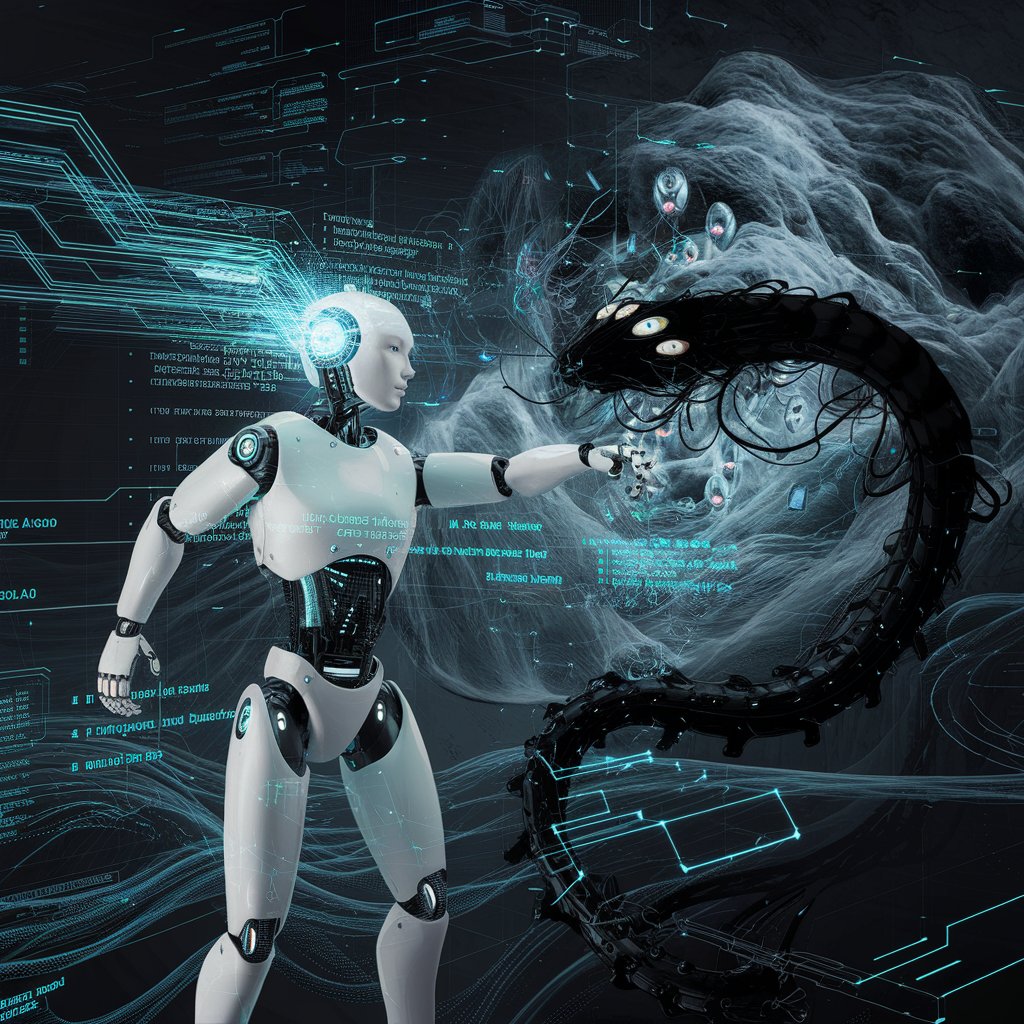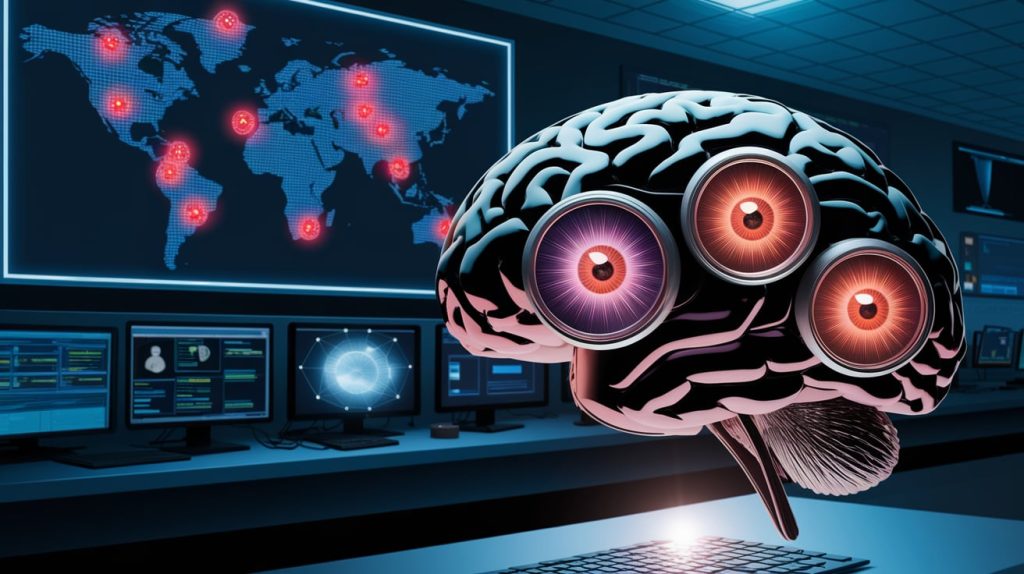The rapid adoption of artificial intelligence (AI) in cybersecurity is transforming the way we safeguard our digital landscapes. As cyber threats become more advanced, traditional defenses are no longer enough. AI-powered cybersecurity systems offer real-time protection, automating processes, detecting threats, and even predicting cyberattacks before they happen. In this article, we’ll explore how AI is redefining cybersecurity, improving data protection, threat detection, and incident response, and discuss what the future holds for this revolutionary technology.
How AI in Cybersecurity is Reshaping Data Protection
In today’s interconnected world, data is the most valuable asset. Data breaches and cyberattacks are growing exponentially, threatening both individuals and organizations. AI enhances data protection by using machine learning algorithms to analyze vast datasets and identify patterns of malicious activity. Traditional systems require manual analysis, but AI systems can work autonomously, flagging potential threats in real-time.
By leveraging AI, cybersecurity professionals can focus on critical tasks while the AI-powered tools analyze user behavior, network traffic, and application data for any signs of danger. With AI’s deep learning capabilities, these systems can adapt to new threats, providing proactive security measures that strengthen overall defenses.

How AI Detects Cyber Threats in Real-Time
One of the most significant advantages of using AI in cybersecurity is its ability to detect cyber threats instantly. Conventional security methods are often slow to respond, leaving organizations vulnerable. AI, on the other hand, continuously monitors networks, servers, and endpoints, identifying unusual activities or behaviors in real-time. By instantly recognizing these anomalies, AI can prevent potential threats from escalating into full-blown cyberattacks.
Machine learning algorithms also allow AI to “learn” from past attacks. This means that every time a new threat is identified, the system improves, becoming more effective at detecting future threats. For instance, AI-powered firewalls and intrusion detection systems can block suspicious traffic before it even reaches its intended target.
AI in Cybersecurity Malware Detection: A Game Changer for Cybersecurity
Malware is one of the most common and dangerous cyber threats. With the evolution of malware strains, including ransomware, trojans, and viruses, traditional cybersecurity methods struggle to keep up. AI has changed the game by providing more sophisticated and efficient malware detection techniques.
AI systems can quickly scan and analyze vast amounts of data to detect malware, often before it even manifests. Using pattern recognition, AI can identify even the most subtle differences between normal files and those infected with malware. This means that companies can respond more quickly, preventing the malware from spreading across their networks.
Additionally, AI in cybersecurity can be used to analyze user behavior and system activity, flagging unusual patterns that may indicate a malware infection. By automating this process, organizations save time and resources while minimizing risk.
AI in cybersecurity -Powered Incident Response: Faster and More Efficient
Incident response is a critical component of cybersecurity. When a cyberattack occurs, time is of the essence. Any delay can lead to significant data loss, financial damage, and reputational harm. AI-powered cybersecurity tools have made incident response faster and more efficient.
- Real-Time Threat Detection
- Automated Incident Response
- Enhanced Incident Analysis
- Accelerated Root Cause Analysis
- Scalability and Efficiency
- Predictive Analytics
- Improved Operational Efficiency

Automating AI in Cybersecurity: Reducing Human Error
One of the most significant benefits of AI in cybersecurity is its ability to automate repetitive tasks, reducing human error and freeing up professionals to focus on higher-level work. Cybersecurity professionals are often overwhelmed with managing complex systems, and manual tasks like scanning logs or monitoring network traffic can be time-consuming.
AI takes over these routine jobs, ensuring that no detail is overlooked. For example, AI can automatically detect and patch vulnerabilities, perform regular security audits, and monitor access control systems for unusual activity. By automating these tasks, AI reduces the risk of human error, which is one of the leading causes of data breaches.
Furthermore, AI can also assist in managing the growing complexity of cloud-based infrastructures and Internet of Things (IoT) devices. As more organizations shift their operations to the cloud, AI ensures that these environments remain secure by monitoring traffic, identifying anomalies, and enforcing security policies.
Predictive AI in Cybersecurity

AI not only helps in detecting and responding to threats but also plays a crucial role in predictive cybersecurity. AI systems can analyze historical data, identify trends, and predict future cyberattacks. By recognizing potential vulnerabilities before they are exploited, organizations can take proactive measures to strengthen their defenses.
Predictive cybersecurity is essential in today’s world, where new and advanced threats emerge regularly. AI can predict the next type of malware attack, phishing scheme, or network intrusion, enabling organizations to stay ahead of hackers.
This predictive capability is particularly valuable for financial institutions, healthcare providers, and other industries that deal with sensitive data. By anticipating cyber threats, companies can avoid the costly aftermath of data breaches and other security incidents.
The Future of AI in Cybersecurity
As AI technology continues to evolve, its role in cybersecurity will only grow. In the future, we can expect even more advanced AI-powered systems that can autonomously defend against cyberattacks, predict complex threats, and offer personalized security solutions based on an organization’s unique risks.
However, AI is not without its challenges. Cybercriminals are also leveraging AI to develop more sophisticated attack methods, making it a continuous race between attackers and defenders. Organizations must remain vigilant and adapt their cybersecurity strategies to keep up with these new AI-driven threats.
The evolution of AI in cybersecurity
Security communities have used AI for cybersecurity since at least the late 1980s with the following key technology advancements:
- In the beginning, security teams used rules-based systems that triggered alerts based on parameters they defined.
- Starting in the early 2000s, advances in machine learning, a subset of AI that analyzes and learns from large data sets, has allowed operations teams to understand typical traffic patterns and user actions across an organization to identify and respond when something unusual happens.
- The most recent improvement in AI is generative AI, which creates new content based on the structure of existing data. People interact with these systems using natural language, allowing security professionals to dive deep into very specific questions without using query language.
But it isn’t just security teams who are using AI in cybersecurity. Cyberattackers, whether nation-state actors, large criminal enterprises, or individuals, may also exploit AI to their advantage. Bad actors infect AI systems, use AI to impersonate legitimate people, automate their cyberattacks, and deploy AI to help research and identify cyberattack targets. There is also a risk that people will paste sensitive data into AI prompts and accidentally leak data to the public.
Conclusion: The Vital Role of AI in Cybersecurity
AI is undoubtedly transforming cybersecurity. From strengthening data protection to detecting real-time threats and improving incident response, AI plays a vital role in safeguarding our digital world. As cyber threats become more sophisticated, the need for AI-driven solutions becomes more critical. Organizations that invest in AI-powered cybersecurity tools today will be better prepared to face the challenges of tomorrow.














